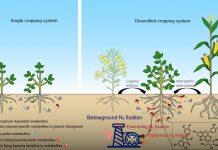Xia WW Zhang CX Zeng XW et al.. Autotrophic growth of nitrifying community in an agricultural soil. ISME Journal 5(7): 1226-1236. (IF 6.153 环境科学,一区)
Abstract
The two-step nitrification process is an integral part of the global nitrogen cycle and it is accomplished by distinctly different nitrifiers. By combining DNA-based stable isotope probing (SIP) and high-throughput pyrosequencing we present the molecular evidence for autotrophic growth of ammonia-oxidizing bacteria (AOB) ammonia-oxidizing archaea (AOA) and nitrite-oxidizing bacteria (NOB) in agricultural soil upon ammonium fertilization. Time-course incubation of SIP microcosms indicated that the amoA genes of AOB was increasingly labeled by (13)CO(2) after incubation for 3 7 and 28 days during active nitrification whereas labeling of the AOA amoA gene was detected to a much lesser extent only after a 28-day incubation. Phylogenetic analysis of the (13)C-labeled amoA and 16S rRNA genes revealed that the Nitrosospira cluster 3-like sequences dominate the active AOB community and that active AOA is affiliated with the moderately thermophilic Nitrososphaera gargensis from a hot spring. The higher relative frequency of Nitrospira-like NOB in the (13)C-labeled DNA suggests that it may be more actively involved in nitrite oxidation than Nitrobacter-like NOB. Furthermore the acetylene inhibition technique showed that (13)CO(2) assimilation by AOB AOA and NOB occurs only when ammonia oxidation is not blocked which provides strong hints for the chemolithoautotrophy of nitrifying community in complex soil environments. These results show that the microbial community of AOB and NOB dominates the nitrification process in the agricultural soil tested. The ISME Journal (2011) 5 1226-1236; doi:10.1038-ismej.2011.5; published online 17 February 2011 Subject Category: microbial ecology and functional diversity of natural habitats







